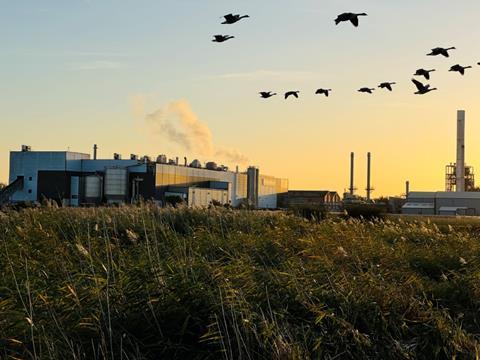
Smurfit Kappa is aiming to reduce CO2 emissions and energy consumption by introducing a new ‘state-of-the-art’ drying process at one of its paper mills.
A virtual representation of the drying system was created using a ‘digital twin’ approach, with the new processes said to have resulted in a 6% decrease in the consumption of steam energy and a 5% reduction in total CO2 emissions at its Townsend Hook paper mill in the UK. The system is now hoped to replace the current paper drying process, which is considered to be the most energy-intensive aspect of manufacturing paper.
Smurfit Kappa’s overall goal is to achieve a 55% intensity reduction in fossil fuel CO2 emissions by 2030 and at least net zero by 2050.
“The advanced new drying process has helped us to significantly reduce our energy consumption at the mill,” said David Upton, managing director of the Smurfit Kappa UK Paper division. “With energy costs continuing to rise and market volatility, this technology will help us to reduce costs and take a further step in achieving our net-zero target.
“We have been trialling this method in other areas of the manufacturing process and hope to see similar positive results over time. A huge thank you must go to all of our partners involved in this highly collaborative project; the results we have seen are testament to their dedication, hard work, and willingness to strive towards a more sustainable future.”
Partners on the project include the Paper Industry Technical Association, Automation X, ProcSim, Carbon Trust and the Department of Business, Energy and Industrial Strategy.
According to Adrian Hiel, a steering committee member of the Coalition for Energy Savings, 70% of the energy used during the paper-making process is dedicated to paper drying.
In September, Aurelius Group acquired three self-powered graphic paper mills from pulp and paper company Sappi Limited with the aim of optimising their individual power plants and raising profits.
However, Cepi previously argued that the EU’s proposed changes to legislation surrounding carbon dioxide emissions were ‘contradictory’ and harmful to the paper and pulp industries.


















No comments yet